Lumenvisum presents you: “Non-place” and “The Place”: KO Chi-Keung in Conversation with TANG Ying Chi, in October 2021. Curated by scholar ZENG Hong, the photographs by KO Chi-Keung, and works on canvas with mixed media by TANG Ying Chi, were put together to have conversation, and let the viewer to examine the relationship between subject and space.
【Information of Exhibition】
Date: 2021.10.05 – 2021.10.31
Time: Tue to Sun 11:00am-1:00pm, 2:00pm-6:00pm (Closed on Mondays)
Venue: Lumenvisum|L2-02, JCCAC, 30 Pak Tin Street, Shek Kip Mei, Kowloon參觀登記
Registration for Visiting:https://www.eventbrite.hk/e/180785583547
________________________
【Opening Day Activities】
Artist Talk:
2021.10.04(Mon)5:00pm – 6:30pm
Opening:
2021.10.04(Mon)6:30pm – 7:30pm
Location:
Lumenvisum | L2-02 JCCAC, 30 Pak Tin St, Shek Kip Mei, Hong Kong登記 Registration:
https://www.eventbrite.hk/e/180733297157
Written by Curator ZENG Hong
One enduring topic in Hong Kong contemporary art is the subject in relation to space. Artists use various media and methodologies to represent their embodied experiences of compressed living space, or their contemplations about place identity engendered by contested geopolitical issues. Recent years have witnessed the depression of the city after a surge of sound and fury, followed by another exodus. Ko Chi-Keung and Tang Ying Chi are two artists heralded in Hong Kong art history as “bringing a new wave from overseas to the local art scene” in the 1980s and 1990s. At this moment, they converse about spatial representation through co- presenting their photography and painting.
“Non-place” is originally a term referring to the unidentified transient spaces such as motorways, airports, and shopping malls; spaces in which people remain anonymous in late capitalist societies. Ko Chi-Keung seems to appropriate the alienating sense of non-place and projects this sentiment onto the cityscape he is intimately familiar with. Construction sites, ferries, footbridges, etc., these transient and temporal space appear to consolidate via the black-and-white solemn symmetry in Ko’s photographs. The viewers’ lament is further pricked by the falling sky, the engulfing seawater,
the spreading deadwood via the overwhelming darkness, and the downward foci. We cannot help wondering, does this speak to the fate of Hong Kong as a city of transience?Practicing primarily on canvas with mixed media, Tang Ying Chi uses her new series of works The Place to bridge the tradition of abstract expressionism with that of ink art. The result is an exploration of a healing space in the aftermath of communal tragedy. Tang adopts the methodology of ink art to seek potentially habitable places hidden in the landscape. The ambiguous shapes of stairs and bridges, floating in the water, reveal Tang’s yielding to the temptation to pursues a modern utopian space. Yet Tang also critiques the tradition of literati painting and its inclination of escapism by orchestrating a dramatic tension of colours that creates incredible contrast. The sensation of colours, drawn from Marks Rothko’s abstract expressionism, directly touches the viewers’ emotional release rather than escapism.After all, where to escape from the ongoing chaos?
